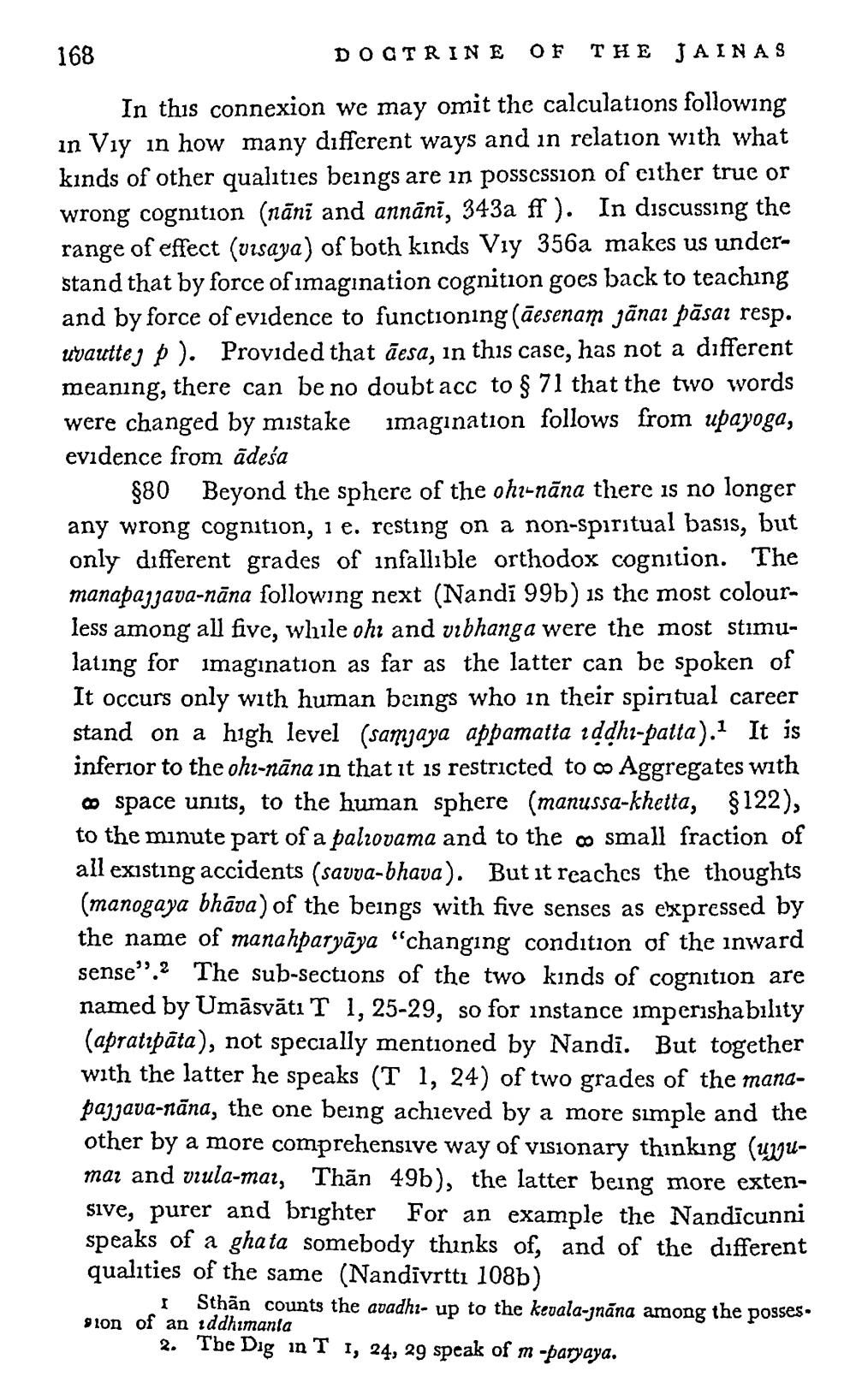________________
168
THE JAINAS
In this connexion we may omit the calculations following in Viy in how many different ways and in relation with what kinds of other qualities beings are in possession of either true or wrong cognition (nānī and annānī, 343a ff). In discussing the range of effect (visaya) of both kinds Viy 356a makes us understand that by force of imagination cognition goes back to teaching and by force of evidence to functioning (āesenam jānai pāsai resp. uvauttej p). Provided that desa, in this case, has not a different meaning, there can be no doubt acc to § 71 that the two words were changed by mistake imagination follows from upayoga,
evidence from ādeśa
§80 Beyond the sphere of the oh-nāna there is no longer any wrong cognition, 1 e. resting on a non-spiritual basis, but only different grades of infallible orthodox cognition. The manapajjava-nāna following next (Nandi 99b) is the most colourless among all five, while oht and vibhanga were the most stimulating for imagination as far as the latter can be spoken of It occurs only with human beings who in their spiritual career stand on a high level (samjaya appamatta iḍḍhi-patta).1 It is inferior to the ohi-nāna in that it is restricted to ∞ Aggregates with ∞ space units, to the human sphere (manussa-khetta, §122), to the minute part of a palovama and to the ∞ small fraction of all existing accidents (savva-bhava). But it reaches the thoughts (manogaya bhava) of the beings with five senses as expressed by the name of manahparyāya "changing condition of the inward sense". The sub-sections of the two kinds of cognition are named by Umāsvāti T 1, 25-29, so for instance imperishability (apratipata), not specially mentioned by Nandi. But together with the latter he speaks (T 1, 24) of two grades of the manapajjava-nāna, the one being achieved by a more simple and the other by a more comprehensive way of visionary thinking (upumar and viula-mar, Than 49b), the latter being more extensive, purer and brighter For an example the Nandicunni speaks of a ghata somebody thinks of, and of the different qualities of the same (Nandivrttı 108b)
DOCTRINE
OF
I Sthan counts the avadhi- up to the kevala-jnana among 91on of an iddhimanta
2. The Dig in T 1, 24, 29 speak of m-paryaya.
the
posses.




